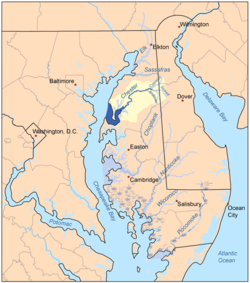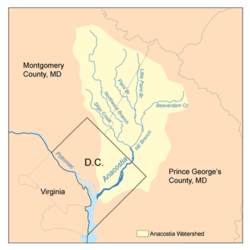This article needs additional citations for verification .(December 2025) |
List of rivers of Maryland (U.S. state).
The list is arranged by drainage basin from east to west, with respective tributaries indented under each larger stream's name and ordered from downstream to upstream.











